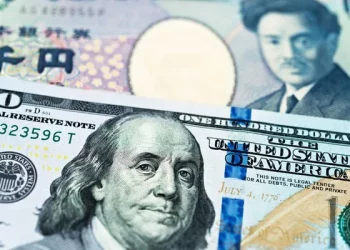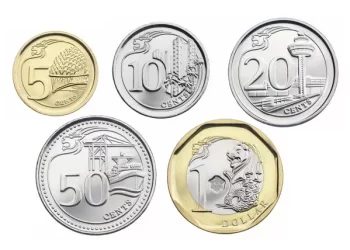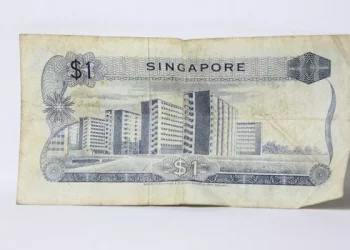The exchange rate between the US dollar (USD) and the Japanese yen (JPY) occupies a position of utmost significance within the global foreign exchange market. It serves as a linchpin in international trade, investment, and financial arenas, with its fluctuations reverberating across multiple economic sectors. In international trade, for instance, a shift in the USD – JPY exchange rate can directly impact the competitiveness of goods and services. When the yen strengthens against the dollar, Japanese exports become relatively more expensive in the US market, potentially leading to a decline in export volumes. Conversely, a weaker yen can boost Japanese exports, as US consumers find Japanese products more affordable. In the realm of investment, the exchange rate between these two major currencies is a key consideration. Multinational corporations with operations spanning the United States and Japan must grapple with currency risk. For example, a US – based company that has significant investments in Japan and earns revenues in yen will see its profits affected by exchange rate movements when converting those yen – denominated earnings back into dollars.
Historical Trends of the USD – JPY Exchange Rate
The Fixed – Rate Era (1949 – 1971)
From 1949 to 1971, the world operated under the Bretton Woods system, which pegged currencies to the US dollar, and the dollar was convertible to gold at a fixed rate of $35 per ounce. During this period, the USD – JPY exchange rate was fixed at 1:360. This fixed rate was beneficial for Japan’s post – World War II economic recovery. It provided stability for Japanese exporters, as they knew exactly how much yen they would receive for their dollar – denominated exports. This stability, combined with other factors such as the Korean War – induced demand for Japanese goods, contributed to Japan’s rapid industrialization and economic growth. The fixed exchange rate also made it easier for international investors to invest in Japan, as there was no exchange rate risk in the short – term.
The Transition to Floating Exchange Rates (1971 – 1973)
In 1971, the US faced significant economic challenges, including a growing trade deficit and inflation. President Nixon announced the suspension of the dollar’s convertibility to gold, effectively ending the Bretton Woods system. This led to a series of adjustments in the fixed exchange rates. Japan, like many other countries, was forced to adapt. In 1973, the yen officially entered the floating – exchange – rate era. The transition was not smooth, as sudden changes in the exchange rate introduced new risks for Japanese businesses. Exporters, who had been accustomed to the stable 1:360 rate, now had to deal with fluctuating revenues depending on the yen – dollar exchange rate.
The 1980s: The Plaza Accord and Its Aftermath
The 1980s witnessed a significant event that had a profound impact on the USD – JPY exchange rate – the Plaza Accord. In 1985, the finance ministers and central bank governors of the G5 countries (the United States, Japan, West Germany, France, and the United Kingdom) met at the Plaza Hotel in New York. Concerned about the overvaluation of the US dollar, they agreed to jointly intervene in the foreign exchange markets to depreciate the dollar. As a result, the USD – JPY exchange rate began to decline rapidly. In 1985, the exchange rate was around 1:262, and by 1988, it had reached 1:121, effectively doubling the value of the yen against the dollar in just three years. This sharp appreciation of the yen had mixed effects on the Japanese economy. On one hand, it made imports cheaper, which was beneficial for Japanese consumers and businesses that relied on imported raw materials. On the other hand, it made Japanese exports more expensive in international markets, hurting the competitiveness of Japanese exporters.
The 1990s to the Present: Volatility and Long – Term Trends
In the 1990s, Japan faced a major economic challenge – the bursting of the asset – price bubble. The subsequent economic slowdown and deflationary pressures had an impact on the yen’s exchange rate. In the early 1990s, the yen continued to appreciate, reaching a high of around 1:79.75 in 1995. However, in the second half of the 1990s, the yen began to depreciate as the Japanese government and central bank took measures to stimulate the economy. Since then, the USD – JPY exchange rate has been highly volatile. In the 2000s, factors such as the global financial crisis in 2008 also influenced the exchange rate. During the crisis, the yen initially appreciated as it was considered a safe – haven currency. However, in subsequent years, as central banks around the world, including the Bank of Japan, implemented various monetary policies, the exchange rate continued to fluctuate. In recent years, the exchange rate has been influenced by factors such as the divergence in monetary policies between the US Federal Reserve and the Bank of Japan, as well as global economic sentiment.
Factors Influencing the USD – JPY Exchange Rate
Interest Rate Differentials
One of the most significant factors influencing the USD – JPY exchange rate is the difference in interest rates between the United States and Japan. Interest rates are set by central banks to control inflation and stimulate or slow down economic growth. When the interest rate in the United States is higher than that in Japan, investors are more likely to invest in US – denominated assets to earn a higher return. To invest in the US, they need to buy US dollars, which increases the demand for dollars and drives up its value relative to the yen. Conversely, if the interest rate in Japan is higher, or if the interest rate differential narrows, investors may shift their investments back to Japan, increasing the demand for yen and causing the yen to appreciate against the dollar. For example, if the US Federal Reserve raises interest rates while the Bank of Japan keeps its rates unchanged or lowers them, the yield on US Treasury bonds will be more attractive compared to Japanese government bonds. This will lead to an influx of capital into the US, strengthening the dollar against the yen.
Economic Growth and GDP
The relative economic growth rates of the United States and Japan also play a crucial role in determining the USD – JPY exchange rate. A growing economy usually attracts more foreign investment, as it offers better business opportunities and higher returns. If the US economy is growing faster than the Japanese economy, foreign investors will be more inclined to invest in the US. This increased investment demand for dollars will push up the dollar’s value. Additionally, a growing economy often leads to higher consumer spending and imports. If the US is importing more from Japan, it will increase the supply of dollars in the foreign exchange market as US consumers need to exchange dollars for yen to pay for Japanese goods. However, if the Japanese economy is growing strongly and its exports are in high demand, the increased demand for yen from foreign buyers will strengthen the yen. GDP growth figures are closely watched economic indicators by currency traders. Positive GDP growth surprises in the US may lead to an appreciation of the dollar, while disappointing GDP growth in Japan may cause the yen to weaken.
Inflation Rates
Inflation is another key factor affecting the exchange rate. When a country experiences high inflation, the value of its currency tends to depreciate. In the case of the USD – JPY exchange rate, if the inflation rate in the United States is higher than in Japan, the purchasing power of the dollar is eroding at a faster rate. As a result, the dollar will be less attractive to hold, and its value relative to the yen will decline. Central banks typically respond to inflation by adjusting interest rates. If the US Federal Reserve raises interest rates to combat inflation, it may initially strengthen the dollar. However, if the inflation is persistent and the central bank’s actions are not sufficient, the long – term outlook for the dollar may still be negative. In Japan, where deflation has been a long – standing issue, the Bank of Japan has implemented various measures to increase inflation to a target level. If these measures are successful and inflation starts to rise in Japan, it could have implications for the yen’s exchange rate.
Monetary Policy
The monetary policies of the US Federal Reserve and the Bank of Japan have a direct impact on the USD – JPY exchange rate. The Federal Reserve uses tools such as open – market operations, changes in the federal funds rate, and quantitative easing to manage the money supply and influence interest rates. For example, during the global financial crisis, the Federal Reserve implemented multiple rounds of quantitative easing, which involved buying large amounts of financial assets, mainly government bonds. This increased the money supply in the US economy. The Bank of Japan has also been actively involved in monetary policy measures. In recent years, it has maintained a policy of quantitative and qualitative monetary easing (QQE), which includes buying government bonds and other assets to increase the money supply and lower interest rates. These policies can directly affect the supply and demand of dollars and yen in the foreign exchange market. If the Bank of Japan engages in more aggressive monetary easing compared to the Federal Reserve, it can lead to a depreciation of the yen relative to the dollar.
Balance of Trade
The balance of trade, which is the difference between a country’s exports and imports, also influences the exchange rate. If Japan exports more goods and services to the United States than it imports, it will have a trade surplus. In this case, there will be a greater demand for yen as US importers need to exchange dollars for yen to pay for Japanese products. This increased demand for yen will cause the yen to appreciate against the dollar. Conversely, if the United States has a trade surplus with Japan, the demand for dollars will be higher, leading to an appreciation of the dollar. Changes in the balance of trade can be due to various factors, such as changes in the competitiveness of domestic industries, trade policies, and global economic conditions. For instance, if Japanese automakers become more competitive in the US market, increasing their exports, it will put upward pressure on the yen.
Market Sentiment and Risk Aversion
Market sentiment and risk – aversion play a significant role in the short – term fluctuations of the USD – JPY exchange rate. The yen has often been considered a safe – haven currency. During times of global economic uncertainty, political instability, or financial market turmoil, investors tend to move their funds into assets that are perceived as safe. The yen is one of the currencies that benefit from this flight – to – safety behavior. When there is a global economic crisis, such as the 2008 financial crisis, investors sell riskier assets denominated in dollars and other currencies and buy yen. This increased demand for yen causes it to appreciate against the dollar. On the other hand, when market sentiment is positive and investors are more willing to take on risk, they may move their funds out of yen and into higher – yielding assets, such as US stocks or emerging – market assets. This can lead to a depreciation of the yen. Risk – aversion levels can be influenced by a variety of factors, including geopolitical events, economic data releases, and central bank announcements.
The Mechanics of the USD – JPY Exchange Rate Determination
The Foreign Exchange Market
The USD – JPY exchange rate is determined in the foreign exchange market, which is the largest and most liquid financial market in the world. In this market, currencies are bought and sold. The main participants in the foreign exchange market include commercial banks, central banks, multinational corporations, hedge funds, and individual traders. Commercial banks act as intermediaries, facilitating currency transactions for their clients, which can be businesses engaged in international trade or investors looking to invest abroad. Central banks, such as the US Federal Reserve and the Bank of Japan, also participate in the market. They may intervene directly by buying or selling currencies to influence the exchange rate. For example, if the Bank of Japan believes that the yen is overvalued and is hurting the competitiveness of Japanese exporters, it may sell yen and buy dollars in the foreign exchange market. Multinational corporations need to exchange currencies to conduct business operations in different countries. A US – based company that imports goods from Japan will need to buy yen to pay for the imports, while a Japanese company exporting to the US will receive dollars and may need to convert them back into yen.
Supply and Demand Forces
The exchange rate is ultimately determined by the supply and demand for dollars and yen. When the demand for dollars exceeds the supply, the dollar will appreciate against the yen, meaning that one dollar can buy more yen. Conversely, when the supply of dollars is greater than the demand, the dollar will depreciate. The demand for dollars can come from various sources. For example, if Japanese investors want to invest in US stocks or bonds, they need to buy dollars. Similarly, if US consumers import Japanese goods, they will supply dollars in exchange for yen. The supply of dollars can also be affected by factors such as US exports. When the US exports goods and services to Japan, Japanese importers will need to buy dollars, increasing the supply of yen in the market. On the yen side, the demand for yen can be driven by US investors looking to invest in Japan, or Japanese exporters receiving dollars and converting them back into yen. The supply of yen can be influenced by Japanese imports, as Japanese consumers need to exchange yen for dollars to buy foreign goods.
Exchange Rate Quotations
The USD – JPY exchange rate is quoted in two ways: the direct quote and the indirect quote. In the direct quote, the exchange rate is expressed as the number of yen per one US dollar (e.g., 1 USD = 150 JPY). This is the most common way of quoting the USD – JPY exchange rate in the market. In the indirect quote, the exchange rate is expressed as the number of US dollars per one yen (e.g., 1 JPY = 0.0067 USD). When the exchange rate changes, if the number of yen per dollar increases (e.g., from 150 to 155), it means the dollar has appreciated and the yen has depreciated. Conversely, if the number of yen per dollar decreases (e.g., from 150 to 145), the dollar has depreciated and the yen has appreciated. Traders and investors closely monitor these exchange rate quotations and use various technical and fundamental analysis tools to predict future movements.
Conclusion
The question of how many yen are in a dollar is far from static, as the USD – JPY exchange rate is the result of a complex and ever – shifting interplay of numerous factors. Interest rate differentials between the United States and Japan wield significant influence. When the Federal Reserve in the US raises interest rates while the Bank of Japan maintains lower rates, the yield on US – denominated assets, such as Treasury bonds, becomes more attractive to investors. This prompts them to move their funds into the US, increasing the demand for dollars. As a result, the dollar strengthens against the yen. Conversely, if the Bank of Japan tightens its monetary policy and raises rates, or if the Federal Reserve eases, the yen may gain in value as investors seek the higher – yielding yen – denominated assets. Economic growth and GDP figures also play a pivotal role. A robustly growing US economy often signals more business opportunities and higher returns. This attracts foreign investment, including that from Japanese investors.
Related topics:























